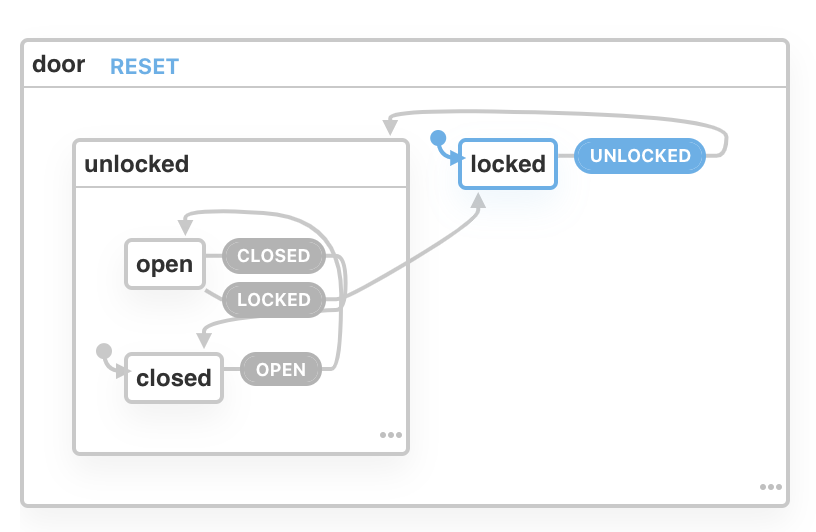As our state machines grow more complex, we might find ourselves in a situation where a state should only exist if the machine is already in another state. To do this, we can use hierarchical states.
Instead of attempting to define all the states of a machine at a top level, we can nest states that should only be available as children of a parent state. These substates are written exactly like the states of the top level of a machine: with an initial property, and the states of the nested state graph.
Using hierarchical states is a great way to avoid needing to check for booleans in an application. If a state can only exist when another state exists, consider if the one isn't in fact a child of the other.
const { Machine } = require("xstate"); const doorMachine = Machine({ id: "door", initial: "locked", states: { unlocked: { initial: "closed", states: { open: { on: { CLOSED: "closed", LOCKED: "#lockedId" } }, closed: { on: { OPEN: "open" } } } }, locked: { id: "lockedId", on: { UNLOCKED: "unlocked" } } } });
